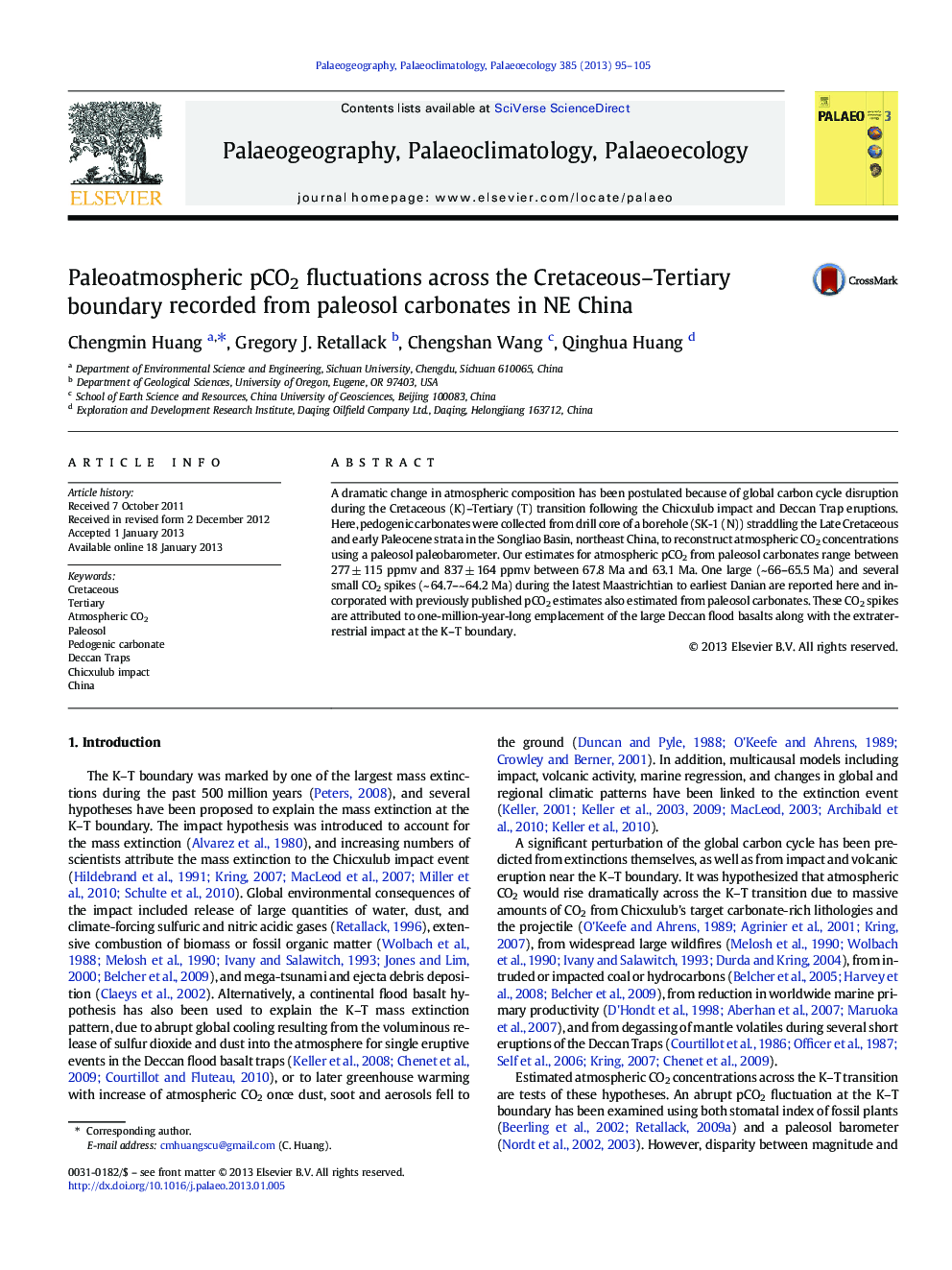| Article ID | Journal | Published Year | Pages | File Type |
|---|---|---|---|---|
| 6350261 | Palaeogeography, Palaeoclimatology, Palaeoecology | 2013 | 11 Pages |
A dramatic change in atmospheric composition has been postulated because of global carbon cycle disruption during the Cretaceous (K)-Tertiary (T) transition following the Chicxulub impact and Deccan Trap eruptions. Here, pedogenic carbonates were collected from drill core of a borehole (SK-1 (N)) straddling the Late Cretaceous and early Paleocene strata in the Songliao Basin, northeast China, to reconstruct atmospheric CO2 concentrations using a paleosol paleobarometer. Our estimates for atmospheric pCO2 from paleosol carbonates range between 277 ± 115 ppmv and 837 ± 164 ppmv between 67.8 Ma and 63.1 Ma. One large (~ 66-65.5 Ma) and several small CO2 spikes (~ 64.7-~ 64.2 Ma) during the latest Maastrichtian to earliest Danian are reported here and incorporated with previously published pCO2 estimates also estimated from paleosol carbonates. These CO2 spikes are attributed to one-million-year-long emplacement of the large Deccan flood basalts along with the extraterrestrial impact at the K-T boundary.
⺠We reconstruct atmospheric pCO2 across the K-T boundary from paleosols in NE China. ⺠Atmospheric pCO2 ranges from 277 to 837 ppmv between 67.8 and 63.1 Ma. ⺠CO2 spikes are detected incorporated with previously published pCO2 estimates. ⺠Elevated pCO2 was produced from emplacement of Deccan floods and Chicxulub impact.
